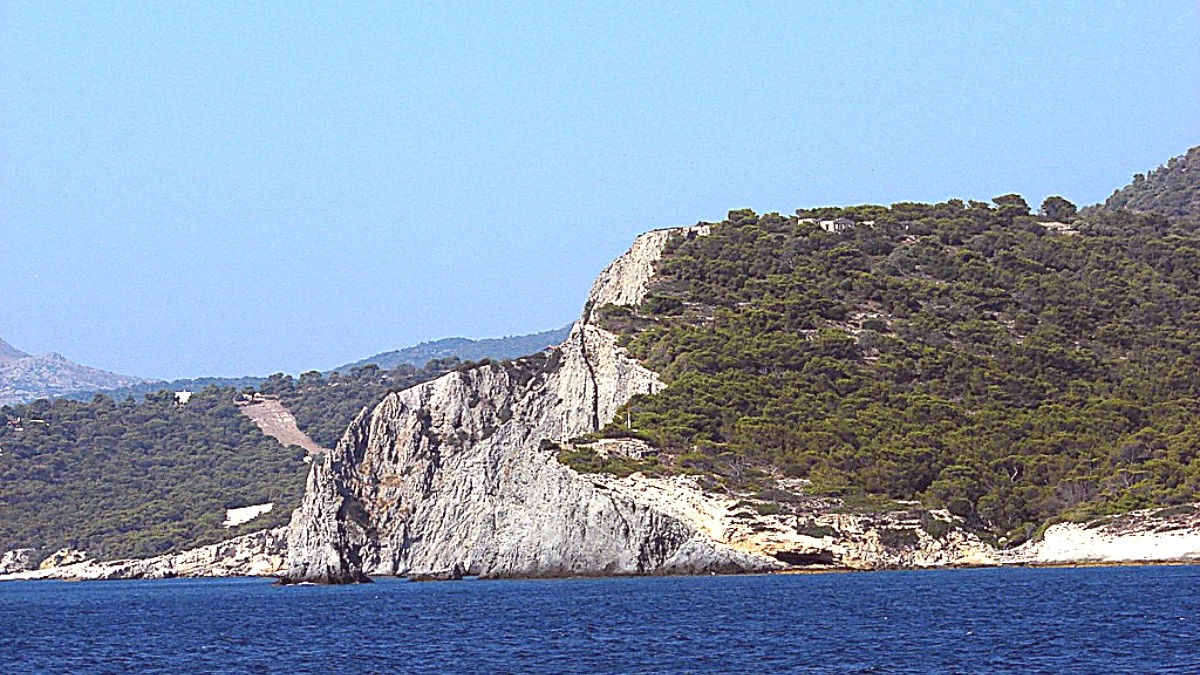
Greece
Athens International Airport (ATH) - Eleftherios Venizelos, is the closest major international airport to Aegina. It sits approximately 33 kilometers (21 miles) southeast of central Athens and about 45 kilometers (28 miles) from Piraeus Port, where ferries to Aegina depart.
Flight frequency and prices go up significantly during the high season (June-August). Airlines add more routes and operate larger aircraft to meet demand. Shoulder seasons (April-May, September-October) offer a good balance of pleasant weather and better value, with flight prices generally lower than peak summer.
Athens International Airport (ATH) provides extensive duty-free shopping, numerous restaurants and cafes, car rental agencies, currency exchange, ATMs, luggage storage, and free Wi-Fi.
Metro Line 3 (blue line) directly connects ATH to Piraeus (Pireas station) in about 1 hour. The Suburban Railway (Proastiakos) also directly connects ATH to Piraeus in about 1 hour.
The X96 express bus operates 24/7 between ATH and Piraeus Port (60-90 min). Taxis are available with a flat rate of approx. €50-€60 to Piraeus.
The metro offers a reliable and affordable ride. The journey takes approximately 1 hour. Look for metro tickets at kiosks or ticket machines.
The X96 express bus operates 24/7. This is a good choice if you arrive late at night or early morning. The journey typically takes 60-90 minutes, depending on traffic conditions.
Taxis offer the quickest option for direct transfers from the airport to Piraeus, though at a higher cost. A flat rate applies.
While Aegina is an island, land transportation matters for reaching Piraeus Port from Athens or other parts of the mainland. No direct border crossings apply for Aegina as an island within Greece.
Renting a car in Athens and driving to Piraeus is an option, but parking at the port can be challenging and expensive. Many travelers find it simpler to use public transport to Piraeus and then rent a car or scooter on Aegina if they wish to explore the island by vehicle.
Drive on the right side of the road. Seatbelts are for all occupants in cars. Helmets are for motorcycle and scooter riders and passengers. Observe local driving habits, which can be assertive.
Greece has a national rail network, but it mainly serves mainland destinations. Buses become relevant if you travel to Piraeus from other regions of mainland Greece. For most travelers, air and sea travel form the core of the journey to Aegina.
Ferries and hydrofoils form the lifeline connecting Aegina to mainland Greece, mainly Piraeus. The main mode of transport to Aegina is by ferry or hydrofoil from Piraeus Port, specifically from Gate E8.
Conventional Ferries take approximately 1 hour 15 minutes to 1 hour 30 minutes; they carry vehicles and offer stable rides. High-speed Hydrofoils (Flying Dolphins) take about 40 minutes, for passengers only, quicker but can feel bumpier. River transportation is not applicable for Aegina.
Conventional ferries offer a more stable ride and deck space for enjoying views.
High-speed hydrofoils are quicker but can feel bumpier in rough seas.
Taxis and local buses are outside Aegina Port upon arrival for connections across the island.
No specific exit fees or taxes are imposed on tourists departing Greece from a port or airport; the cost is usually included in your flight or ferry ticket price.
Piraeus Port offers basic facilities, including cafes, kiosks for snacks, and ticket offices. Athens International Airport provides extensive shopping, dining, airport lounges, and other services for departing passengers.
Factor in travel time from Aegina to Piraeus by ferry or hydrofoil (40-90 minutes).
Allow approximately 1-1.5 hours for travel from Piraeus Port to Athens Airport by metro or bus.
This ample time allows for check-in, security screening, and navigating potential queues.